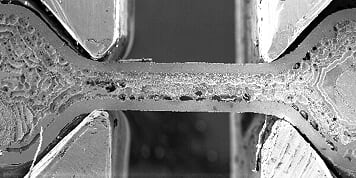
Understanding Material Strength Through Micro Tensile Testing
Material strength, a cornerstone concept in material science, dictates the ability of a material to endure external forces without collapsing or yielding. Micro-tensile testing is pre-eminent among tensile testing standards developed to gauge this intrinsic quality. It unlocks the ability to explore the tenets of a material’s strength at an almost atomic scale, offering insights often obscured at a macroscopic level.
The Science of Tensile Testing
Tensile testing, at its core, quantifies how a material reacts when subjected to stress.
Upon applying tensile stress, the first observed phenomenon is linear elasticity. It’s a regime where the material stretches but tends to revert to its original shape once the force dissipates. The gradient of the initial straight-line graph, the elastic modulus, serves as an index to how rigid or pliant a material is.
But as stress mounts, there arrives a point – the yield stress – beyond which the material won’t revert back. It has entered the realm of plastic deformation, where changes become irreversible. This stage is especially crucial in materials like metals, which can undergo significant deformation before snapping.
Ultimate Tensile Strength and Beyond
As one stretches the specimen, it reaches its ultimate tensile strength, the edge of its endurance. Past this point–though the material might still elongate–it becomes increasingly weaker until it fractures. The fracture strength denotes the exact stress level at which it gives way.
In micro tensile testing, the cross-sectional area plays a pivotal role in the determination of these strengths. Given the minuscule dimensions of the samples, even minor variances can influence outcomes, underscoring the precision required in sample preparation.
A Dive into Micro Tensile Mechanisms
The Alemnis Standard Assembly (ASA) system showcases the epitome of micro tensile testing machinery. The system offers an unparalleled insight into the intricacies of tensile strength and yield strengths at a microscopic level. By subjecting minute samples to stress, one can delineate the line between elastic and plastic deformations, capturing the nuances of material behaviour under strain.
Parallel to this, micropillar compression serves as a foil to tensile testing. Instead of stretching, these tiny pillars are subjected to compressive strength tests. By exploring both tensile and compressive domains, scientists can glean a comprehensive picture of the material’s robustness.
Lastly, in situ mechanical testing pulls back the curtain on real-time material reactions. Watching a material bend, stretch, and occasionally break, all while under a controlled environment, amplifies our understanding of its innate properties.
At Alemnis, we remain at the forefront of exploring material strengths, constantly endeavouring to expand the horizons of what’s known. Our commitment to refining techniques like micro tensile testing is unwavering. Such tests, along with their compression counterparts, grant invaluable insights into the very fabric of materials, from their elastic hopes to their plastic realities.
For those deeply entrenched in the realm of material science, or even those just kindling an interest, we invite you to explore more on tensile testing, its wonders, and intricacies.


